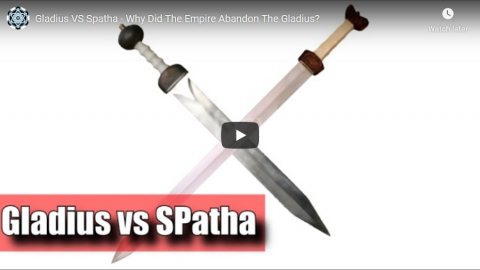Metatron
Published on 11 Feb 2017If the famous Gladius/rectangular Scutum combo had proven to be so effective for so many centuries why did the Late Empire Romans choose to abandon it in favour of a spatha/round shield combination? Here is what I think.
Gladius was one Latin word for sword, and is used to represent the primary sword of Ancient Roman foot soldiers.
A fully equipped Roman legionary after the reforms of Gaius Marius was armed with a shield (scutum), one or two javelins (pila), a sword (gladius), often a dagger (pugio), and, perhaps in the later Empire period, darts (plumbatae). Conventionally, soldiers threw javelins to disable the enemy’s shields and disrupt enemy formations before engaging in close combat, for which they drew the gladius. A soldier generally led with the shield and thrust with the sword. All gladius types appear to have been suitable for cutting and chopping as well as thrusting.
Gladius is a Latin masculine second declension noun. Its (nominative and vocative) plural is gladiī. However, gladius in Latin refers to any sword, not specifically the modern definition of a gladius. The word appears in literature as early as the plays of Plautus (Casina, Rudens).
Modern English words derived from gladius include gladiator (“swordsman”) and gladiolus (“little sword”, from the diminutive form of gladius), a flowering plant with sword-shaped leaves.
Gladii were two-edged for cutting and had a tapered point for stabbing during thrusting. A solid grip was provided by a knobbed hilt added on, possibly with ridges for the fingers. Blade strength was achieved by welding together strips, in which case the sword had a channel down the center, or by fashioning a single piece of high-carbon steel, rhomboidal in cross-section. The owner’s name was often engraved or punched on the blade.
September 22, 2019
Gladius VS Spatha – Why Did The Empire Abandon The Gladius?
Comments Off on Gladius VS Spatha – Why Did The Empire Abandon The Gladius?
No Comments
No comments yet.
RSS feed for comments on this post.
Sorry, the comment form is closed at this time.




